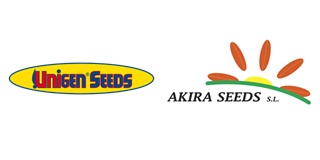
UNIGEN SEEDS SPAIN
Advances in methods to Enhance Quality and Safety of Ready to Eat Fresh Products
The QUAFETY Project is co-funded by the European Commission through the 7th framework program, the total contribution is of about 3 million Euro and involves 14 partners, of which 6 Universities, 2 R&D Institutions, and 6 SME (small and medium enterprises), from 7 different countries (Italy, United Kingdom, Israel, Poland, Netherlands, Portugal, Greece). Project aims Fresh-cut packaged fruit and vegetables sold in the market represent an underestimated public health risk due to the possible presence of
24 June, 2020
The QUAFETY Project is co-funded by the European Commission through the 7th framework program, the total contribution is of about 3 million Euro and involves 14 partners, of which 6 Universities, 2 R&D Institutions, and 6 SME (small and medium enterprises), from 7 different countries (Italy, United Kingdom, Israel, Poland, Netherlands, Portugal, Greece). Project aimsFresh-cut packaged fruit and vegetables sold in the market represent an underestimated public health risk due to the possible presence of pathogenic bacteria that are known to cause serious illness in the consumers. Another peculiarity of RTE (ready-to-eat) fresh F&V is that the food is constituted by living cell tissue, rapidly metabolizing, especially when peeled and cut in portions for better convenience. For this reason quality attributes (i.e. appearance, texture, flavour, and nutritional value) degrade very fast and shelf life is often a matter of days or, in some cases, of weeks. For all these reasons fresh-cut produce represent a very interesting RTE food system where the need of improvements in terms of safety and quality is of paramount importance. ObjectivesAs a response to the industry needs and in relation to the state of the art, QUAFETY project will address the following objectives:- to provide the industry with diagnostic kits for the evaluation of microbial contamination and shelf-life determination;- to provide useful tools for process control to the fresh-cut industry based on non-destructive and rapid measurements or evaluation, aimed to enhance the final quality of the product;- to provide the industry operators with decisions supporting tools in very critical points of the fresh-cut processing chain from raw genotype selection to economic strategic planning; and to optimise processing techniques, in order to improve safety and quality;- to develop and implement process innovations aimed to improve safety and quality;- to consider consumers? response to safety and quality attributes deriving from the novel applications in order to evaluate the impact on markets and profitability implications for the industry;- to design and implement a more effective and efficient Quality/Safety Management System for RTE fresh produce industry;- to disseminate in a modern and efficient way all the innovative products of the present proposal. Last July, 11 and 12, it took place in Athens the mid-term meeting of the Project, in which the partners explained the state of the art in the consecution of the different objectives. Emanuela Fontana, from Fresh Plaza, the Dutch editorial company participating in the Project, explains, in a very complete report, the main advances explained during the Athens meeting. The article by Emanuela Fontana is available as pdf below. The picture, included in the article by E. Fontana, shows the quality preservation measures and the safety ensuring measures during the food chain process.Quality preservation measures involve soilles system, automatic cutting, heat treatments, and refrigeration.The safety ensuring measures involve water disinfection, to avoid Listeria biofilms, fruit decontamination, UV treatments, and active packaging. ?









